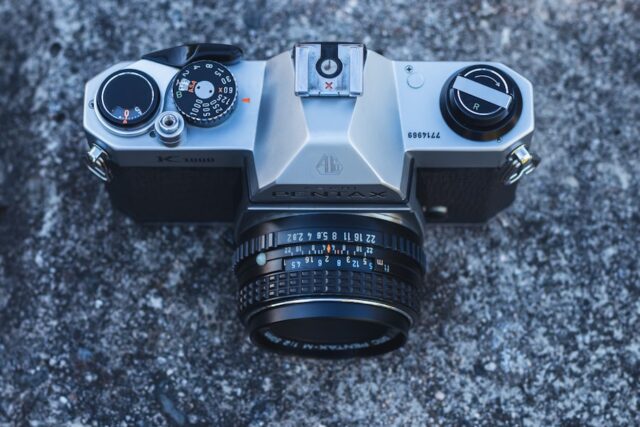In the realm of smartphones, camera quality has become a pivotal factor influencing consumer choices. The evolution of mobile photography has reached remarkable heights, with manufacturers integrating advanced technologies that rival traditional cameras. Modern smartphones are equipped with multiple lenses, including wide-angle, telephoto, and macro capabilities, allowing users to capture a diverse range of images.
For instance, the latest flagship models often feature sensors with higher megapixel counts, improved low-light performance, and enhanced image stabilization. This means that users can take stunning photographs even in challenging lighting conditions, such as dimly lit restaurants or during twilight hours. Moreover, the software that accompanies these cameras plays a crucial role in enhancing image quality.
Features like computational photography utilize algorithms to improve details, reduce noise, and enhance colors. For example, Apple’s Night Mode and Google’s Night Sight have set new standards for low-light photography, enabling users to take clear and vibrant photos without the need for a flash. Additionally, the integration of artificial intelligence in camera systems allows for real-time scene recognition and optimization, ensuring that every shot is as perfect as possible.
This combination of hardware and software advancements has transformed smartphones into powerful tools for both amateur and professional photographers alike.
Long-lasting Battery Life
Battery life is a critical consideration for smartphone users, especially in an age where constant connectivity is the norm. The demand for longer-lasting batteries has led manufacturers to innovate in both battery technology and power management systems. Modern smartphones often come equipped with high-capacity lithium-ion batteries that can easily last a full day or more on a single charge.
For instance, devices with 4000mAh batteries or larger can support extensive usage, including streaming videos, gaming, and browsing the internet without the constant worry of running out of power. In addition to larger batteries, advancements in software optimization have significantly improved battery efficiency. Operating systems now include features that intelligently manage background processes and reduce power consumption during idle times.
For example, adaptive battery technology learns user habits and prioritizes power for frequently used apps while limiting resources for those that are rarely accessed. This not only extends battery life but also enhances the overall user experience by ensuring that the device remains responsive throughout the day. Furthermore, fast charging technologies have emerged, allowing users to quickly recharge their devices when needed, making it easier to stay connected without lengthy downtime.
High-Resolution Display

The display quality of smartphones has seen tremendous advancements over the years, with high-resolution screens becoming a standard feature in many devices. Modern smartphones often boast resolutions that exceed Full HD (1920 x 1080 pixels), with many flagship models offering Quad HD (2560 x 1440 pixels) or even 4K (3840 x 2160 pixels) displays. This increase in pixel density results in sharper images and more vibrant colors, enhancing the overall viewing experience for users.
Whether watching movies, playing games, or browsing social media, a high-resolution display allows for greater detail and clarity. Additionally, advancements in display technology have introduced features such as OLED (Organic Light Emitting Diode) and AMOLED (Active Matrix OLED) screens. These technologies provide deeper blacks and more vivid colors compared to traditional LCD displays.
For instance, OLED screens can turn off individual pixels to achieve true black levels, resulting in stunning contrast ratios that make images pop. Furthermore, many modern displays support high refresh rates—such as 90Hz or 120Hz—which contribute to smoother scrolling and improved responsiveness during gaming or other fast-paced activities. This combination of high resolution and advanced display technology creates an immersive experience that captivates users and enhances their interaction with the device.
Fast Processing Speed
| Metrics | Data |
|---|---|
| Processor Speed | 3.2 GHz |
| RAM | 8 GB |
| SSD Storage | 256 GB |
| Response Time | 5 ms |
The processing power of smartphones has dramatically increased over the past decade, enabling devices to handle complex tasks with ease. Modern smartphones are equipped with multi-core processors that can execute numerous operations simultaneously, significantly improving performance across various applications. For example, flagship devices often feature processors with eight cores or more, allowing for seamless multitasking and efficient handling of demanding applications such as video editing or 3D gaming.
In addition to powerful processors, advancements in RAM technology have further enhanced processing speed. Many high-end smartphones now come with 8GB or even 12GB of RAM, which allows for smoother operation when running multiple applications at once. This means users can switch between apps without experiencing lag or slowdowns.
Furthermore, the integration of artificial intelligence into processing units has enabled features like real-time language translation and enhanced camera functionalities, showcasing how processing speed is not just about raw power but also about intelligent performance enhancements that improve user experience.
Advanced Security Features
As smartphones have become central to our daily lives, security has emerged as a paramount concern for users. Manufacturers have responded by incorporating advanced security features designed to protect personal data and ensure user privacy. One of the most notable advancements is biometric authentication, which includes fingerprint scanners and facial recognition technology.
These features provide a quick and secure way to unlock devices while minimizing the risk of unauthorized access. Moreover, many smartphones now offer robust encryption methods to safeguard sensitive information stored on the device. For instance, end-to-end encryption ensures that messages sent through various applications remain private and secure from potential eavesdroppers.
Additionally, operating systems frequently receive updates that address security vulnerabilities and enhance overall protection against malware and cyber threats. Features such as secure folders allow users to store sensitive files separately from other data on their devices, providing an extra layer of security. As cyber threats continue to evolve, these advanced security measures are essential for maintaining user trust and protecting personal information.
Enhanced Audio Quality

Audio quality is an often-overlooked aspect of smartphone design; however, it plays a significant role in the overall user experience. With the rise of streaming services and mobile gaming, consumers are increasingly seeking devices that deliver superior sound quality. Many modern smartphones are equipped with high-fidelity audio components that enhance playback quality for music, podcasts, and videos.
For example, devices featuring stereo speakers provide a richer sound experience compared to single-speaker setups. Additionally, advancements in audio processing technology have led to features such as spatial audio and Dolby Atmos support. These technologies create an immersive sound environment that enhances the listening experience by simulating surround sound effects.
This is particularly beneficial for gaming enthusiasts who rely on audio cues for competitive advantage or for movie lovers who want to enjoy cinematic sound quality on their devices. Furthermore, many smartphones now support high-resolution audio formats like FLAC (Free Lossless Audio Codec), allowing audiophiles to enjoy music with greater detail and clarity than ever before.
Expandable Storage Options
As digital content continues to grow in size—thanks to high-resolution photos, videos, and apps—storage capacity has become a critical consideration for smartphone users. While many devices come with substantial built-in storage options ranging from 64GB to 512GB or more, the ability to expand storage through microSD cards remains a highly sought-after feature for those who require additional space. This flexibility allows users to store vast amounts of data without worrying about running out of space.
The convenience of expandable storage is particularly beneficial for photographers and videographers who capture large files regularly. For instance, a user can easily insert a microSD card to store thousands of high-resolution images or hours of 4K video footage without compromising device performance or requiring cloud storage solutions that may incur additional costs. Furthermore, expandable storage options provide peace of mind for users who prefer to keep their data local rather than relying solely on internet connectivity for access to files stored in the cloud.
Affordable Price Point
In an increasingly competitive smartphone market, affordability has become a key factor influencing consumer decisions. While flagship models often come with premium price tags due to their advanced features and cutting-edge technology, there is a growing segment of budget-friendly smartphones that offer impressive specifications at more accessible price points. These devices cater to consumers who seek value without sacrificing essential features such as camera quality, battery life, and processing speed.
For example, several manufacturers have introduced mid-range models that incorporate many features found in high-end devices but at a fraction of the cost. These smartphones often include high-resolution displays, decent camera systems, and long-lasting batteries while maintaining a sleek design. This democratization of technology allows a broader audience to access quality smartphones without breaking the bank.
As competition continues to drive innovation and lower prices across the board, consumers can expect even more options that deliver exceptional performance without compromising their budgets.
FAQs
What are mid-range phones?
Mid-range phones are smartphones that fall between budget and flagship phones in terms of price, features, and performance. They offer a balance of affordability and functionality, making them a popular choice for many consumers.
What are some features that mid-range phones offer better than flagships?
Some features that mid-range phones offer better than flagships include longer battery life, expandable storage options, headphone jacks, and a more affordable price point. Additionally, mid-range phones often have similar camera capabilities to flagships, making them a great option for photography enthusiasts on a budget.
Why do mid-range phones have longer battery life than flagships?
Mid-range phones often have larger battery capacities compared to flagships, as they prioritize battery life over slim design. Additionally, mid-range phones typically have less power-hungry processors and displays, contributing to their longer battery life.
What are expandable storage options in mid-range phones?
Expandable storage options in mid-range phones refer to the ability to use a microSD card to increase the device’s storage capacity. This feature is often not available in flagship phones, making mid-range phones a more flexible option for users who require additional storage space for photos, videos, and apps.
Why do mid-range phones still have headphone jacks?
Many mid-range phones still include headphone jacks, while flagship phones have started to phase them out in favor of wireless and USB-C audio solutions. This makes mid-range phones a more convenient option for users who prefer to use traditional wired headphones without the need for adapters or additional accessories.



MOST COMMENTED
Apps
10 Hidden Android Apps: Boost Productivity Instantly
Apps
Privacy-Focused Messaging Apps: A 2025 Comparison
Apps
Top Minimalist Apps for a Distraction-Free Life
Apps
Top Offline Apps for 2025: No Internet Needed
Gadget
The Battle of Wearables: Smart Rings vs. Smartwatches
Gadget
The Future of Mental Health: Wearable Gadgets on the Rise
Laptops
Top Laptops for Coding and Content Creation Under ₹70,000